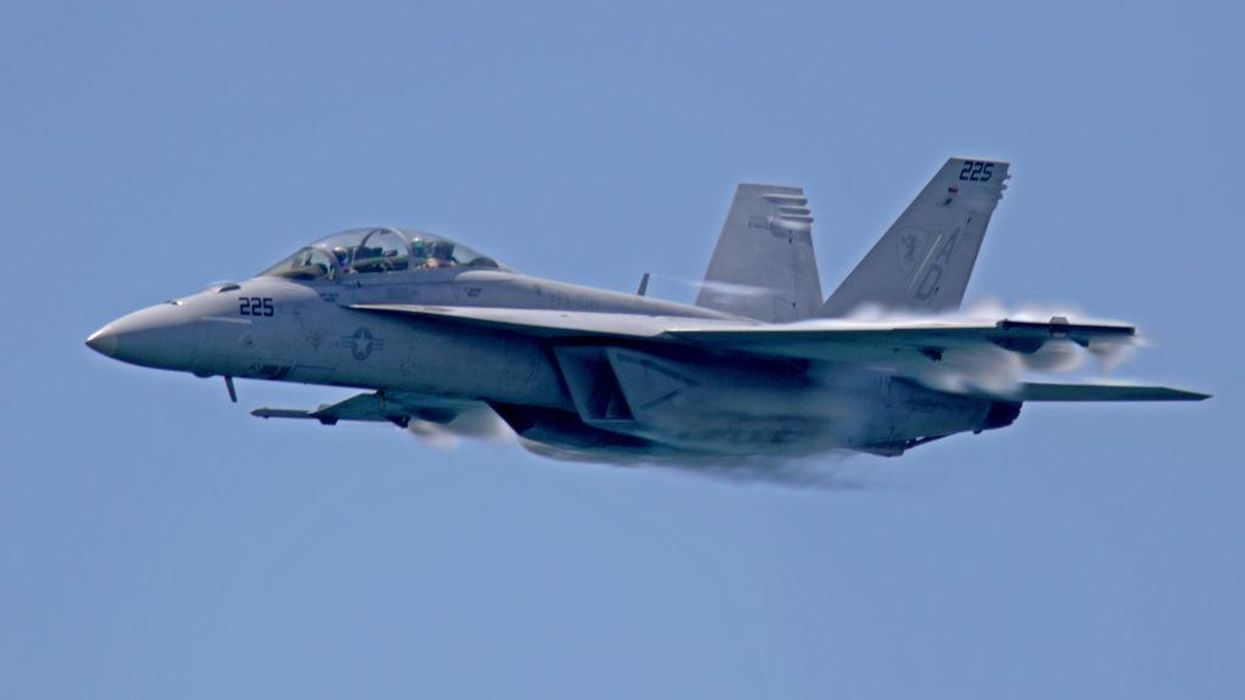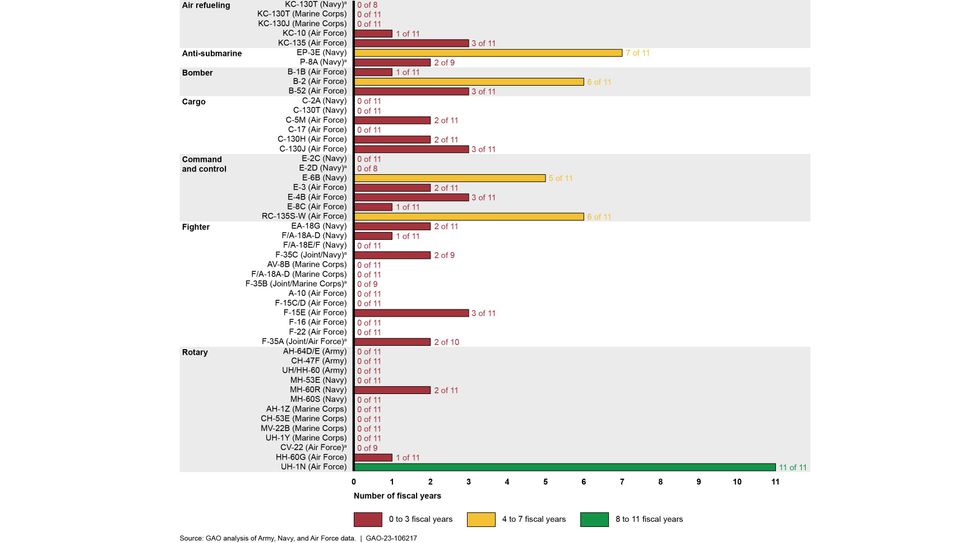
John McCall/Sun Sentinel/Tribune News Service via Getty Images

A new government watchdog report gave a damning review of the U.S. military's aerial mission capability, indicating that only four of 49 aircraft long associated with American air superiority "met their annual mission capable goal" in a majority of the years from 2011 through 2021.
Despite the Department of Defense spending tens of billions of dollars annually for a tactical advantage, the report has highlighted a deficit in the health and readiness of the American aircraft fleet at time of increased tensions with both Russia and communist China.
The Government Accountability Office published a "Weapon System Sustainment" report on Nov. 10 — the public version of another report issued in September scrubbed of sensitive information by the DOD.
The GAO examined 49 aircraft and found that only four met their annual mission-capable goal over the past decade.
The mission-capable rate references the "percentage of total time when an aircraft possessed by a squadron can fly and perform at least one mission."
The report concluded that "the average mission capable rate for the selected aircraft has fallen for the Air Force, Navy, and Marine Corps, to varying degree." The average mission-capable rate for select Army aircraft has, however, risen.
A total of 26 aircraft failed to meet their annual mission-capable goal in any fiscal year between 2011 and 2021, including the Air Force's A-10, C-17, CV-22, F-15C/D, and F-22; the Army's AH-64D/E and CH-47F; the Navy's C-130T, C-2A, KC-130T, and MH-60S; and the Marine Corps' AH-1Z, F-35B, F/A-18A-D, and UH-1Y.
In 2021, only two aircraft met their service-established mission-capable goals, and 30 aircraft were "more than 10 percentage points below the mission capable goal."
The four aircraft that secured passing grades over the 11-fiscal-year period were the Navy's EP-3E (Aries II reconnaissance plane), the Air Force's B-2 (Spirit stealth bomber), the USAF's RC-135S-W (Cobra Ball reconnaissance plane), and the Army's UH-1N (Twin Huey helicopter).
The Navy's E-6B (Mercury, communications and strategic airborne command post plane) came close, missing the mark by one year.

The GAO indicated that "a number of sustainment challenges including aging aircraft, maintenance challenges, and supply support issues account for this decrease in mission capable rates."
The Air Force's F-16, for instance, is showing its age. The aircraft is in routine need of replacement parts that are in short supply or are no longer manufactured. There is also a shortage of trained maintenance personnel to keep the F-16 current and capable.
The operating and support (O&S) costs for the GAO-reviewed aircraft were approximately $54 billion in 2020. Since aging aircraft have required more attention, maintenance costs have increased by $1.2 billion since fiscal year 2011.
O&S costs tend to account for roughly 70% of an aircraft's total life-cycle cost and include the cost of repair parts, field maintenance, engineering support, and personnel.
While Air Force and Army O&S costs have gone down, the Navy and Marine Corps O&S costs have increased. The GAO suggested that "these trends have largely been driven by changes in the size of aircraft inventory and reduced flying hours."
The GAO noted that the DOD under Secretary of Defense Lloyd J. Austin III not only failed to meet its goals last year, but that it did so in contravention of DOD policy that "the military services shall maintain all mission essential systems and equipment to the optimum mission capable status."
The GAO made clear in a February report that the U.S. faces a significant challenge in the form of an "increasingly assertive" communist China, which aims to "challenge the U.S. military across the spectrum of conventional and unconventional capabilities."
"Successful preparation for strategic competition with China will depend on continuing efforts to increase U.S. combat credibility and enhance conventional deterrence that can help prevent conflict, protect U.S. interests, and assure allies," said the report.
Extra to improving the military's average mission-capable rate, the GAO highlighted other issues the DOD might want to address, including: